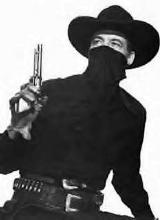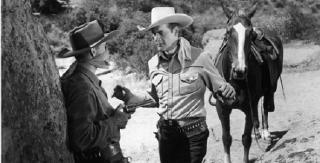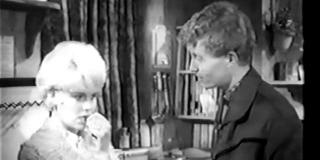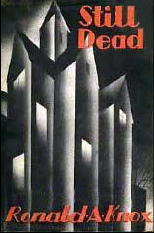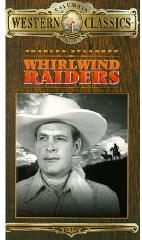 WHIRLWIND RAIDERS. Columbia, 1948. Charles Starrett, Smiley Burnette, Fred Sears, Philip Morris, Jack Ingram, Nancy Saunders, Patrick Hurst, Don Kay Reynolds (as Little Brown Jug), Doye O’Dell and The Radio Rangers. Screenplay: Norman Hall. Director: Vernon Keays.
WHIRLWIND RAIDERS. Columbia, 1948. Charles Starrett, Smiley Burnette, Fred Sears, Philip Morris, Jack Ingram, Nancy Saunders, Patrick Hurst, Don Kay Reynolds (as Little Brown Jug), Doye O’Dell and The Radio Rangers. Screenplay: Norman Hall. Director: Vernon Keays.
Well, once again there are no raiders in this next Durango Kid movie, or if there are, by no connotation of the word, are they “whirlwind raiders.” The bad guys are more insidious than that. At a time when the Texas Rangers were officially disbanded, the “Texas State Police” were put in charge, and if the screenwriter for this film is to be believed, they were a bunch of crooks with political connections who rode sway over the populace with grafts, holdups and penny ante corruption throughout their ranks.
(If anyone knows how true this small aberration in Texas history might be, let me know.)
Charles Starrett is Steve Lanning in this one, a former Texas Ranger working undercover to root out the bad guys, led by saloon owner Tracey Beaumont (Fred Sears) and his head henchman, Buff Tyson (Jack Ingram, whom I am sure always played a crook in his 271 film appearances, or in at least most of them).
But what this means is that in this movie, as opposed to the previous one, Lanning does have of a reason for having two identities. Whenever he does anything of semi-illegality, such as breaking into Beaumont’s safe late at night, he does it as the Durango Kid.
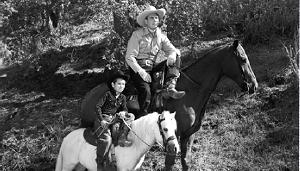
I mentioned earlier my (adult-based) puzzlement that no one ever seems able to recognize Steve as Durango, but in this movie, a young lad named Tommy Ross (played by Little Brown Jug, as he is billed in the credits) actually does discover that the two are indeed one and the same.
He is quickly sworn to secrecy and sworn in as an adjunct Texas Ranger to boot. His first assignment? To follow the actions of Smiley Burnette, who “is acting very suspiciously.”
Smiley in this movie is a traveling tinkerer who’s set up shop in the same town, and with a covered wagon filled with pots and pans and objects of other obviously beneficial value, including a cage containing two chickens, it establishes a very convenient venue for Smiley to clown around in, making an enormous racket most of the time he’s on the screen.
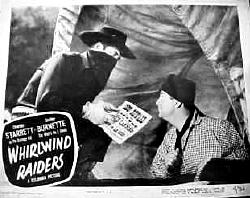
There’s no love interest in this one either, or just the smallest of hints that newspaper owner Bill Webster (Patrick Hurst) is interested in making moves on Claire Ross (Nancy Saunders), daughter of rancher Homer Ross (Philip Morris). There’s no time to add any mushy stuff to this story, which is chuck full of action, comedy and singing, in just about that order.
Additional comments: This was the only movie Patrick Hurst made, and he plays his role so thinly in this one, you might not even realize he was in it. Philip Morris, although only 55, looks old and tired, and it’s scary to learn that he died the very next year. Beginning in 1949, Fred Sears began his career as a director with yet another Durango movie, Desert Vigilante. He did lots of westerns among his 51 films, including the 1958 version of Utah Blaine, based on the novel by Louis L’Amour.
— October 2004.
[UPDATE] 02-12-09. This is the second of three Durango Kid movies I taped and watched over four years ago now. I’ll post the third review tomorrow, if all goes well.
After digging the reviews out of storage, it prompted me to sign up for the Encore grouping of premium cable channels yesterday — one of them being, of course, the Western Channel, the source of these Durango films.

I canceled today without taping a single one of their offerings. I do not care to pay a premium fee for cable channels with huge logos (bugs) in the lower corner of the screens. These must have appeared between now and the last time I’d signed up for the Encore channels, since they weren’t there before, at least not as permanently and as ugly as they are now.
Turner Classic movies uses logos, but they come on only every 30 minutes or so, and then quietly disappear. The Encore logos are four times the size and are opaque white. Maybe I’m the only one who hates these things. And don’t get me started on network TV and the bulk of the non-premium cable channels. Besides news and sports, I don’t watch any of them.
Not only do they have logos, but they have characters from next show come wandering in on the bottom of screen and jump around until you notice them (as if) and then whoosh off, sound effects included, all the while the current show is still on. Besides this sort of nonsense, and five-minute blocks of commercials, I can’t see anyone except invalids and shut-in’s putting up with this. But I guess they do.
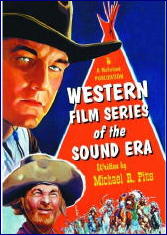
On a more pleasant note, I’m going to repeat one of the comments that Walker Martin left after I posted yesterday’s Durango Kid feature:
“Today, I just received a new book, Western Film Series of the Sound Era, by Michael R. Pitts. Published by McFarland it’s 474 pages [long and covers] 30 western film series from the mid-1930s to the early 1950s. Included is a long chapter on The Durango Kid, 45 pages discussing all the films and 11 photos and posters. Also there is a chapter on the Dr. Monroe series discussing the three films starring Charles Starrett.
“McFarland Books website lists the 30 series covered.”
It’s just out. It was published only last December, and I’ve ordered a copy myself. As Walker says, the various series it covers are listed on the McFarland website, but to save you the time of searching online for it yourself, here’s the Contents Page:
BILLY CARSON 3
BILLY THE KID 21
CHEYENNE HARRY
THE CISCO KID 43
DR. MONROE 64
THE DURANGO KID 68
FRONTIER MARSHALS 113
HOPALONG CASSIDY 118
THE IRISH COWBOYS 175
JOHN PAUL REVERE 180
LIGHTNING BILL CARSON 183
THE LONE RANGER 190
THE LONE RIDER 208
NEVADA JACK MCKENZIE 219
THE RANGE BUSTERS 232
RANGER BOB ALLEN 254
RED RYDER 259
RENFREW OF THE ROYAL MOUNTED 284
THE ROUGH RIDERS 290
ROUGH RIDIN’ KIDS 300
ROYAL CANADIAN MOUNTED POLICE 303
THE SINGING COWGIRL 320
THE TEXAS RANGERS 322
THE THREE MESQUITEERS 340
THE TRAIL BLAZERS 384
WILD BILL ELLIOTT 391
WILD BILL HICKOK 399
WILD BILL SAUNDERS 412
WINNETOU 415
ZORRO 429
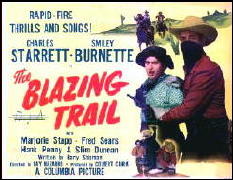
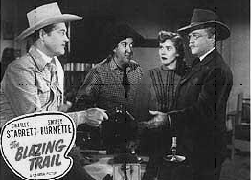
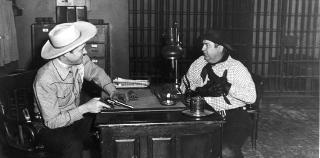

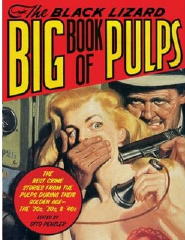
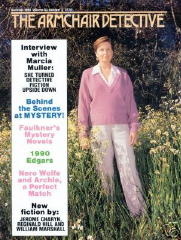

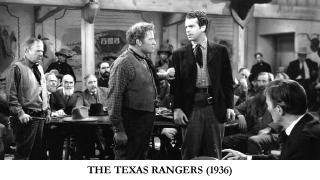
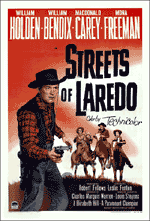
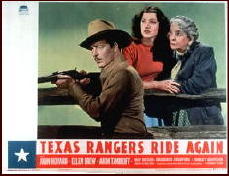
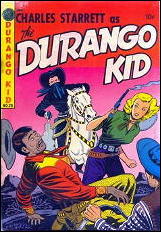
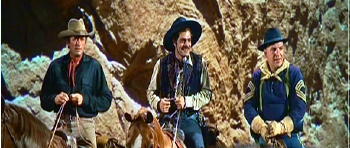
 WHIRLWIND RAIDERS. Columbia, 1948. Charles Starrett, Smiley Burnette, Fred Sears, Philip Morris, Jack Ingram, Nancy Saunders, Patrick Hurst, Don Kay Reynolds (as Little Brown Jug), Doye O’Dell and The Radio Rangers. Screenplay: Norman Hall. Director: Vernon Keays.
WHIRLWIND RAIDERS. Columbia, 1948. Charles Starrett, Smiley Burnette, Fred Sears, Philip Morris, Jack Ingram, Nancy Saunders, Patrick Hurst, Don Kay Reynolds (as Little Brown Jug), Doye O’Dell and The Radio Rangers. Screenplay: Norman Hall. Director: Vernon Keays.



